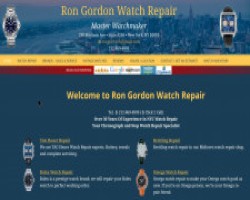Unraveling the Causes and Solutions to Unwanted Hair Ripping
Discover the causes of hair ripping, how to prevent it, and tips for maintaining healthy hair. Learn effective hair care practices and solutions to avoid damage and discomfort.

Understanding Hair Ripping: What It Is and How It Happens
Hair ripping is a term commonly used to describe an unwanted, often painful, process where hair is unintentionally or intentionally removed from the scalp or body. It can occur during various activities such as combing, brushing, or even through certain hair removal methods. Whether it’s the accidental tugging on a strand or using an incorrect hair tool, the experience of hair ripping is something most people would prefer to avoid. While it may seem like a minor inconvenience, it can cause discomfort and, in some cases, even result in hair damage.
Common Causes of Hair Ripping
There are several factors that contribute to the occurrence of hair ripping. The most common cause is the use of improper hair care tools. For example, a comb with tightly spaced teeth or a hairbrush that pulls at knots can cause individual strands of hair to rip from the root. Additionally, rough handling of wet hair is another major contributor. Wet hair is more fragile and prone to breakage, so combing or brushing too aggressively can lead to painful hair ripping.
Another common cause is the use of certain hair removal methods, such as waxing or threading, which involve pulling the hair forcibly from its root. While these methods are popular for removing unwanted body hair, they can sometimes cause damage to the hair follicle if not done properly.
Preventing Hair Ripping: Tips for Care
To minimize the risk of hair ripping, it’s essential to follow a few best practices. First, always choose the right hair care tools. Opt for a wide-toothed comb or a detangling brush if you have thick or curly hair. These tools help reduce friction and prevent hair from getting caught, ultimately preventing breakage. When brushing, always start from the tips and work your way up, gently detangling the hair as you go.
Another preventive step is to avoid combing or brushing wet hair. If you must, make sure to use a leave-in conditioner or a detangling spray to help ease the process. Gently towel-dry your hair instead of rubbing it vigorously, which can cause unnecessary stress on the strands.
For those who use hair removal methods like waxing, ensure that the procedure is performed by a trained professional. This reduces the chances of over-extraction and hair follicle damage. It’s also important to follow proper aftercare to help soothe the skin and hair follicles post-treatment.
Hair Care Products That Can Help
Several hair care products are specifically designed to help prevent hair damage and minimize the chances of hair ripping. Leave-in conditioners, hair serums, and oils can add moisture to the hair, making it more elastic and less prone to breakage. Using a silk or satin pillowcase can also reduce friction while you sleep, preventing unnecessary stress on your hair.
If you're concerned about hair ripping due to styling practices, consider switching to heat-free hair styling methods. For example, using rollers or braids to achieve waves can help you avoid the damage caused by excessive heat styling tools like flat irons or curling wands.
Dealing with Hair Ripping: What to Do If It Happens
If you experience hair ripping, it’s important not to panic. The first step is to inspect the damaged area and check for any noticeable hair loss or irritation. If the hair is still attached to the root, gently comb through it to untangle any knots, making sure to be as gentle as possible to avoid further damage.
In some cases, you may notice that hair follicles are visibly irritated or inflamed. Applying a soothing ointment or oil, such as aloe vera or tea tree oil, can help reduce inflammation and promote healing. Be sure to allow your scalp time to recover before engaging in any harsh styling or treatment routines.
If hair ripping becomes a recurring problem, it may be beneficial to consult with a professional hairstylist or dermatologist. They can help assess the cause of the issue and offer customized solutions to improve the health of your hair and scalp.
Conclusion: Take Care of Your Hair to Avoid Ripping
Hair ripping is an issue that can cause discomfort and even long-term damage to your hair if not addressed properly. By understanding the causes and taking preventive measures, you can significantly reduce the chances of hair ripping. Proper hair care tools, gentle handling, and the right hair products are your best defense in maintaining strong and healthy hair. Remember, it’s always better to take the time to care for your hair than to deal with the consequences of hair ripping and damage down the road.
What's Your Reaction?





















